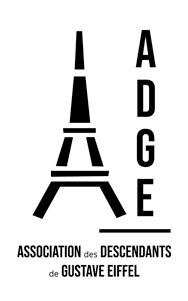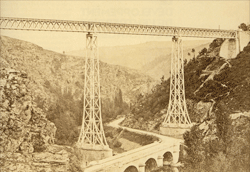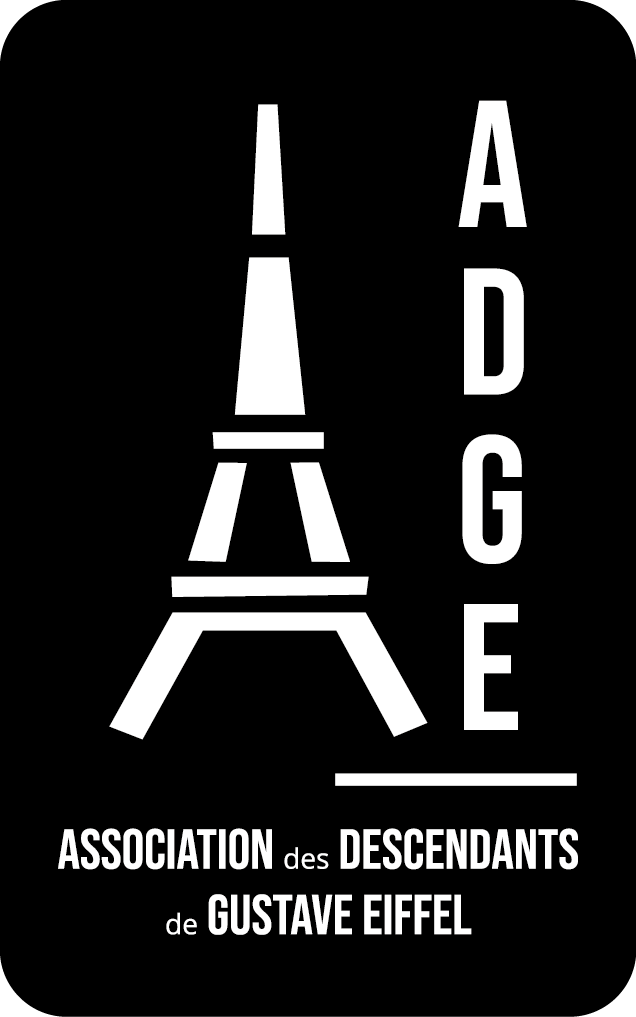His life
Short biography of Gustave Eiffel
written by Savin Yeatman-Eiffel
-

1832~
Gustave’s youth : Gustave Eiffel was born on December 15th 1832 in Dijon, France. His father, François Alexandre Boenickhausen, known as « Eiffel », was a former hussar from Napoleon’s armies. But the figurehead of the family was certainly his mother, Catherine Mélanie Moneuse. Daughter of a timber tradesman, she had the idea very early on to start
Read more -
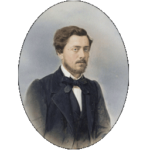
1857~
The first successes : When Charles Nepveu’s business faced unexpected financial difficulties, Gustave Eiffel decided to continue to work for him, even without pay. Several bridges designed by the young engineer won tenders organized by rail way companies. When Nepveu’s company is finally absorbed by the Compagnie Générale des Chemins de Fers... Read more
-
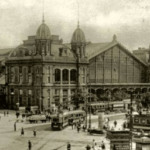
1870~
The Glory : The 1870’s and 1880’s are a glorious period for Gustave Eiffel. From all over the world, all now call on the G. Eiffel et Cie. company to create the most important and the most complex works of the period, such as:
- the Pest train station in Hungary – 145 meters long, 25 meters high – the first train station with a visible metallic façade...
Read more -

1880~
The Eiffel Tower : The monument the most easily associated with the memory of the great engineer is without doubt the famous tower that bears his name. Conceived with his two main collaborators, Maurice Koechlin and Émile Nouguier, as well as with the collaboration of the architect Steven Sauvestre, that incredible project was created to...
Read more -

1890~
The forgotten scientific work : At the beginning of the 1890s, Gustave Eiffel finds himself involved, very unintentionally, with the setbacks of the Panama Canal, for which he had designed the giant locks. Hurt by the groundless accusations he are targeted against him – the press and the politicians are pressing for scapegoats, after the financial collapse of this massive project – and that justice...
-

1923
Death of Gustave Eiffel : An extraordinary engineer, a great scientist, a leading “captain of industry”, a patriarchal figure respected by his family, Gustave Eiffel died with all possible honors on December 27th 1923 in Paris in his luxurious residence of 1 rue Rabelais (now destroyed).
His detailed biography
1832
Gustave’s youth
Gustave Eiffel was born on December 15th 1832 in Dijon, France. His father, François Alexandre Boenickhausen, known as « Eiffel », was a former hussar from Napoleon’s armies. But the figurehead of the family was certainly his mother, Catherine Mélanie Moneuse. Daughter of a timber tradesman, she had the idea very early on to start trading coal. Her small business grew quickly thanks to the ongoing industrial revolution, so much so that her husband quit his activities to assist her.





1843-50
1852-55
1856
1857
The first successes
When Charles Nepveu’s business faced unexpected financial difficulties, Gustave Eiffel decided to continue to work for him, even without pay. Several bridges designed by the young engineer won tenders organized by rail way companies. When Nepveu’s company is finally absorbed by the Compagnie Générale des Chemins de Fers, Gustave’s precision and sense of challenge put him in charge, at only 25 years old, of a highly strategic project: the construction of the Bordeaux Bridge.

It was a risky and ambitious endeavor : a bridge of more than 500 meters, built over a tumultuous river. To succeed, Gustave experimented with some of the techniques that later became his trademarks, such as the use of compressed‐air caissons to build the foundations of the bridge.
Gustave, now the company’s chief engineer, supervises the construction of several more bridges in the area. He settles in Bordeaux and tries to marry. Perceived as a bit of an upstart by the rich local bourgeoisie, he is turned down several times and calls his mother to the rescue, asking her to find him « a neat housewife that won’t pester him too much » (!) The wise Catherine finds the perfect candidate in Marie Gaudelet, who Gustave has already met in his youth. In spite of the unusual circumstances, Gustave will love Marie dearly. She will give birth to five children: Claire, Laure, Édouard, Valentine and Albert.
At the end of 1866, Gustave Eiffel, encouraged by his successes in building bridges in the South‐West of France, starts his own company at 48, rue Fouquet in Levallois Perret, on the west‐side of Paris. He quickly wins a series of major contracts that consolidate his reputation in France but more especially in the rest of the world – such as the Viaduct of Rouzat and of Neuvial, or the Salemleck footbridge in Egypt.
Gustave outclasses the competition by the extreme precision of his projects, all designed and produced part by part in his workshops to be then only assembled on the building site, and by the technical innovations that he develops and improves upon – such as the use of cantilevers and the “hurling” of the central span between two existing bridge piles – that also make his constructions faster to build and extremely cost effective.
1862
1864
1867
1870
1870
The Glory
The 1870’s and 1880’s are a glorious period for Gustave Eiffel. From all over the world, all now call on the G. Eiffel et Cie. company to create the most important and the most complex works of the period, such as:
– The Pest train station in Hungary – 145 meters long, 25 meters high – the first train station with a visible metallic façade, and one of many constructions by Eiffel in Eastern Europe
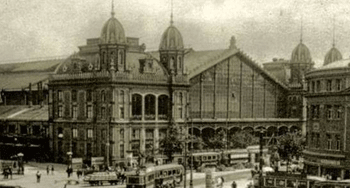
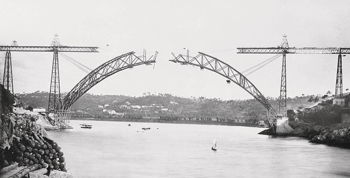
– The monumental Maria Pia Bridge across the Douro in Portugal – 353 meters long, longest span : 160 meters, height 61 meters – a pure and perfect shape, technically as well as esthetically.
– The Garabit Viaduct, above the Truyère ‐ 565 meters long, longest span: 165 meters, height: 122 meters – the new system of piles used (without intertwining), and patented by Eiffel, will later be used on the Eiffel Tower.


– The Cubzac Road Bridge, on the Dordogne – 1045 meters long, 3284 tons of frame – an audacious construction that used both the techniques of cantilevers and of the “hurling” of the central span
– The internal structure of the Statue of Liberty in New York, designed by the sculptor Bartholdi to celebrate the centenary of the US Independence – 120 tons of frame, supporting 80 tons of copper sculpture – Eiffel’s involvement was crucial to make the project technically viable.
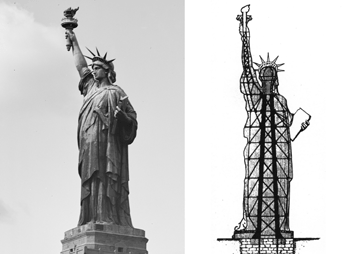

– The metallic structures of the Bon Marché store and of the Crédit Lyonnais Bank grand hall in Paris; or the dome of the Nice Observatory –22 meters wide, ingeniously floating on water to allow to rotate it by hand.

Smaller but very lucrative Eiffel constructions – ready to assemble “with less than 12 men” – also find their way all across the globe – Vietnam, Bolivia, Algeria, Java…
– At the same period, Gustave Eiffel loses his wife prematurely, in 1877. It’s a devastating blow for him. His eldest daughter, Claire, who will also second her father in his work, takes over the day to day running of the family. She will remain closely by his side, even after her marriage to Adolphe Salles.

1875
1872-74
1876
Order for the Maria Pia Viaduct on the Douro in Portugal (353 meters) which ensures its international reputation due to the new cantilever construction technique and opens the doors to new markets including the Viana bridge with a length of 736 meters.
1877
1878
1880
Gustave Eiffel obtains the construction of the Garabit Viaduct which makes it famous because of its height (122 meters) and its parabolic shape.
1880
The Eiffel Tower
The monument the most easily associated with the memory of the great engineer is without doubt the famous tower that bears his name. Conceived with his two main collaborators, Maurice Koechlin and Émile Nouguier, as well as with the collaboration of the architect Steven Sauvestre, that incredible project was created to mark the opening of the 1889 World’s Fair and was financed by Gustave Eiffel himself for 80% of the costs, in exchange of an initial concession of 20 years.
Still extremely impressive today, that tower of 1000 feet was an even more formidable technical challenge at the time it was built. One must not forget that it was almost twice as high as the tallest monument of the day: the Washington Monument and its 169 meters, itself erected just a few years earlier in 1884. Gustave has had to fight against all sorts of odds to succeed, on the building site as well as outside. There were many opponents to the project, including among the local elite ‐ the signatories of the notorious « Artists Protest ». Once the construction was over, another battle began to ensure that the tower would last: it was initially planned to be dismantled after 20 years.
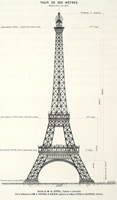
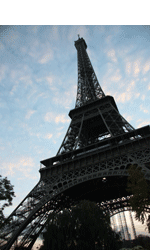
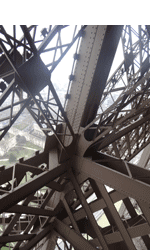
The Tower took only 26 months to build, from January 28 th 1987 to March 30th 1889, five month of which were spend the foundations alone. The 18 000 parts were designed and manufactured with an error margin of less than a tenth of a millimeter at the Eiffel workshop in Levallois, then driven by cart to the Champs de Mars where they were hauled up by cranes that moved up on the construction using the tracks of the future elevators, and assembled by a team of just around 250 workers. That gigantic « Meccano » required the setting of some 2 500 000 rivet joints, 1 000 000 of which were set directly on site.




The success of the Eiffel Tower was instant. It quickly became the symbol of Paris, and for most foreigners the symbol of France. It currently attracts close to 7 million visitors each year, with a total of more than 250 million since its opening.
Right after the tower, Gustave Eiffel embarked in 1890 on another project of epic proportions : an ingenious « underwater bridge » to cross the English channel. Refused in the end by the authorities for purely political reasons, Eiffel’s designs already closely foreshadowed what would become the « Eurotunnel », some 104 years later.
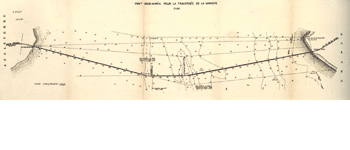
1881-82
Szeged Bridge in Hungary and the frame of the Statue of Liberty in New York. At the same time, he developed the technique of economical portable bridges for equipping local roads, railway companies, armies in the field and colonies for which he supplied 4,000 meters of bridges that could be assembled by 12 men in a few days.
1883
1884
1886
1887
1888
1889
1890
The forgotten scientific work
At the beginning of the 1890s, Gustave Eiffel finds himself involved, very unintentionally, with the setbacks of the Panama Canal, for which he had designed the giant locks. Hurt by the groundless accusations he are targeted against him – the press and the politicians are pressing for scapegoats, after the financial collapse of this massive project – and that justice will later fully clear him of, he chooses to sell all his shares and retire from his company. From then on and until his death, Eiffel decides to dedicate himself to scientific research, the results of which he will share free of charge with the rest of the scientific community. The celebrity of his constructions often overshadows the very important influence Gustave Eiffel has had on Science, especially Meteorology and Aerodynamics.
In 1889, he builds a meteorological observatory on top of the Eiffel Tower and undertakes further research throughout France. He also works passionately on the issues of Aerodynamics – Gustave Eiffel has had to fight against the power of the wind in all his constructions – and builds on the Champ de Mars, in 1909, a wind tunnel where are carried out the first tests on the wing designs of aviation pioneers like Wright or Blériot, then later on full air planes designed by Nieuport or Levasseur.
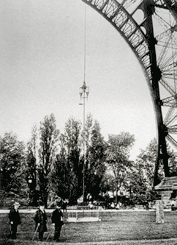



In 1911, Gustave Eiffel leaves the Champ de Mars that is quickly turning into a new residential neighborhood. He builds at 67, rue Boileau, in the 16th Arrondissement of Paris, a much larger and better equipped laboratory, with a 2 meters wide tunnel mouth able to reach speeds of up to 30 meters per seconds. Thanks to that new equipment, he lays down the groundwork of the science of Aerodynamics. The type of wind tunnel created by Eiffel has been copied and reproduced since then all across the world, and it is still used today (including at rue Boileau) to test the aerodynamics of airplanes, cars, buildings, ships, bridges etc.
An extraordinary engineer, a great scientist, a leading “captain of industry”, a patriarchal figure respected by his family, Gustave Eiffel died with all possible honors on December 27th 1923 in Paris in his luxurious residence of 1 rue Rabelais (now destroyed) in the 8th arrondissement. He is buried in the Levallois‐Perret cemetery.
1893
1894-98
1903-09
1912
1917
1923
